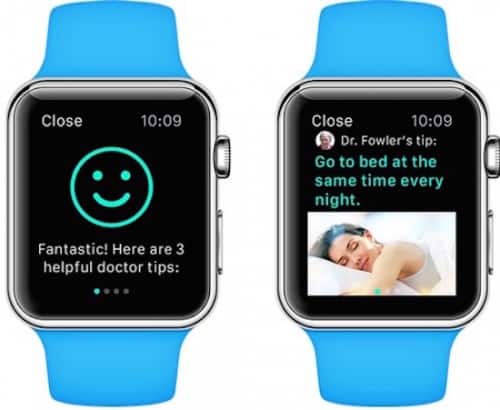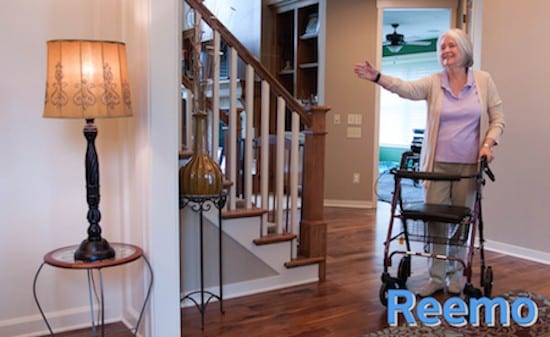With wearable technology still in its infancy, predictions about its future uses, forms and capabilities remain a much-discussed topic. However, despite these persisting questions and skepticism about the new technology, businesses that adopted wearables in their early stages demonstrate the technology’s effectiveness for content distribution.
An interview series conducted by Clutch explored how 15 business leaders with experience designing and developing for wearables applied the new technology in unique, innovative ways.
What opportunities and challenges motivate a business to use wearables for content distribution and incorporate them into its business model? The interviews conducted by Clutch show that facilitating the distribution of content, products and services to a broad audience was a leading motive for wearables adoption. Overall, the case studies demonstrated three ways that businesses can use wearables to improve content distribution.
Wearables add another way to access content to a list that already includes print, online and mobile. Especially for businesses with robust web and mobile platforms, this third option serves as a way to extend their influence. By incorporating a wearable application or device into its business model, a company not only positions its brand in an additional niche but also ensures its appeal to a broader audience.
PizzaPizza, a Canada-based restaurant chain, employed this strategy to improve its customer experience. While the restaurant chain already had a website and mobile and tablet applications for placing orders, its Apple Watch application added an element of fun and immediacy to the food-ordering experience through a delivery countdown and the ability to place orders with a finger tap.
Runtastic, a fitness and lifestyle technology company, also extended its brand by embracing wearables. The company created a wearable device, the Orbit, to present the data collected through its fitness apps in a simpler way. With the Orbit, Runtastic aims not only to track activities and workouts but also promote a healthful lifestyle by placing the data in a personalized context. The wearable becomes a lifestyle device, not just a fitness device. It appeals to an audience that does not necessarily exercise everyday but wants to know how to understand its current level of health.
Wearable technology enables businesses to close the physical gap between their products and their audience. This increased connectivity habituates a user to embrace the service provided by the business wholeheartedly.
A smartwatch’s placement on the wrist makes it more difficult for the wearer to ignore the notifications and reminders a company sends. This phenomenon increases the likelihood and frequency of content consumption and product usage.
For example, Medisafe, a mobile platform that helps patients adhere to their medication regime, invested in a wearable application that pings the wearer when it is time to take a medication. In this way, Medisafe guarantees content consumption by presenting the wearable application as an indispensable companion to the mobile counterpart, the company’s core platform.
Wearables make existing data more valuable and relevant by presenting it in new, more contextualized ways. Emphasizing this novel perspective on data allows businesses to draw attention to problems they seek to address.
HealthTap, a health management platform, aimed to make a connection between the health-related data collected by wearables and its usefulness in a doctor consultation setting. HealthTap’s wearable app makes data more useful by compiling it in a personalized Health Graph. Then, when a user reaches out to HealthTap’s network of doctors through the app, the doctor can access the patient’s Health Graph and use the information to make a more informed diagnosis.
 Another example is Reemo, a company that identified wearable technology as a method of addressing limited mobility. With its Reemo device, a smartband worn on the wrist, the company facilitates independent living by harnessing connected devices and everyday gestures to enable hands-free interactions between an individual and his environment. For example, raising your hand turns up the heat or pointing at a lamp turns on the light.
Another example is Reemo, a company that identified wearable technology as a method of addressing limited mobility. With its Reemo device, a smartband worn on the wrist, the company facilitates independent living by harnessing connected devices and everyday gestures to enable hands-free interactions between an individual and his environment. For example, raising your hand turns up the heat or pointing at a lamp turns on the light.
 Interviews with businesses that developed wearable applications or devices within the past year and a half revealed three ways that the new technology facilitates content distribution. These examples not only hint at the inevitably vibrant future of wearable technology but also point to how marketers can use wearables for brand development and audience enhancement.
Interviews with businesses that developed wearable applications or devices within the past year and a half revealed three ways that the new technology facilitates content distribution. These examples not only hint at the inevitably vibrant future of wearable technology but also point to how marketers can use wearables for brand development and audience enhancement.
[xyz-ihs snippet="Hubspot-CTA-Leaderboard"]